Ice dams are a significant cause of headaches for most homeowners during cold winters.
Ice dams can get so big that water starts leaking into the house and attic, causing extensive damage to the roof and gutters if not checked.
You might wonder if gutters are responsible for the problem.
Do gutters cause ice dams?
Gutters are not responsible for ice dams. A warm roof melts snow or ice, which then slides down and freezes again, causing a dam under which water can collect. However, homes with gutters, especially open gutters, are prone to heavier and thicker ice dams because the gutters act as reservoirs that hold more ice.
This article will give you all the information you need on gutters in relation to ice dams and how to prevent or control them whenever they occur.
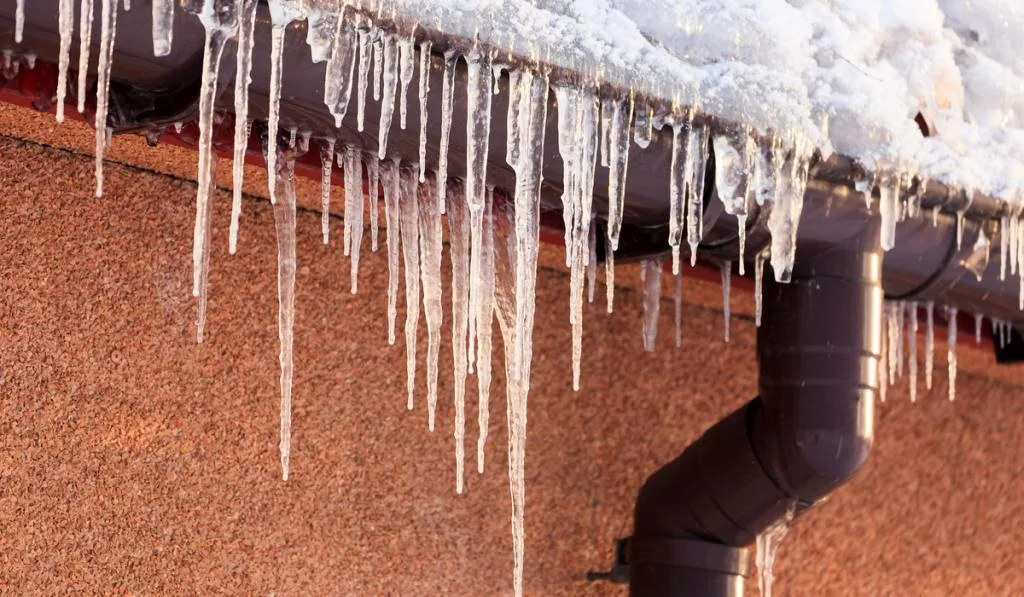
Do Gutters Cause Ice Dams?
No, gutters are not responsible for ice dams.
However, homes with gutters, especially open gutters, are prone to heavier and thicker ice dams because gutters act as reservoirs that hold more ice.
Gutters being responsible for ice dams is a misconception that results from not knowing enough about ice dam formation and product salespeople who want you to think their ‘anti-ice-dam’ gutter is worth buying.
What Is an Ice Dam?
An ice dam is a heap of ice that builds up on the edges of a roof, especially during cold winters.
With time, the ice gets thick, and the water flowing beneath the ice gets blocked by the ice and starts leaking into the attic, ceiling, and even the walls if not managed.
Ice dams will even damage the roof, gutters, and the home’s inside in the extremes.
Although icicles mostly accompany ice dams, the presence of icicles does not always mean that ice dams are there. If ice builds up behind them, this should cause an alarm.
However, you need to know what an ice dam looks like to take action before the damage gets extensive.
How Do Ice Dams Form?
Ice dams form when the inner roof over the attic heats up to a temperature higher than the outlying ice, forcing the lowest layer of ice to melt and flow between the roofing shingles and the outer ice.
However, on reaching the eaves, the water freezes again because, unlike the roof over the attic, the eaves remain cold, forcing the water to freeze and form a kind of ice barrier for more water flowing down the roof.
Once the barrier gets thick enough, the rest of the water flowing beneath the ice can leak through the shingles and even into the outer walls, eventually leading to a heavy roof leak.
If your roof has open gutters, they might form the base of an ice dam if the ice builds up enough to create a heap.
The heaping gets worse if your roof has a shallow incline because the ice dams get firmer grips on the roof. This is why most homes outside of the tropics have steep slopes.
Large overhangs on your roof are the potential locations for big ice dams.
Since the overhangs will remain cold, the water flowing under will have more surface area to freeze back into ice and form a larger barrier and ice dam, even bigger than those attributed to gutters.
How Can I Tell if I Have an Ice Dam?
Check the eaves and gutters. You may have an ice dam if you see heaps of ice along the roof’s edge or icicles thicker than 2 inches in diameter.
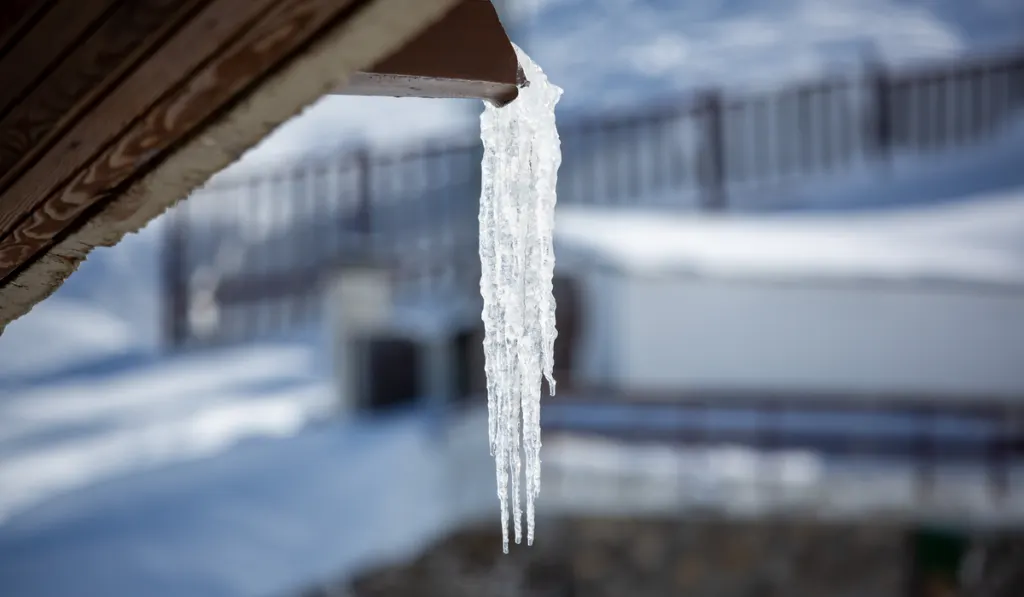
If you suspect an ice dam problem, check the underlying roof and walls for any of these signs:
- Ice heaps behind the icicles
- Moisture stains on the ceiling and exterior walls
- Moisture in the attic
What Causes Ice Dams?
Now that we know how ice dams form, what causes them? Here are a few causes.
Poor Attic insulation
Your attic insulation might have spaces that allow heat from the house into the attic, forcing the ice closest to the roof to melt and flow down to the eaves and gutters, where they may freeze back to ice.
If not checked or drained, this could lead to an ice dam.
Failure to Remove Snow
Simple roof maintenance practices like raking off the snow are pivotal in minimizing the amount of water that melts into the gutters.
Regular raking ensures that there will be less water and ice on the eves and gutters in case of low temperatures.
Clogged Gutters
Whether it is leaves, sticks, ice, or any other debris accumulated in the gutters, they all block the pathway of runoff water from the roof and must be cleared to avoid ice dams.
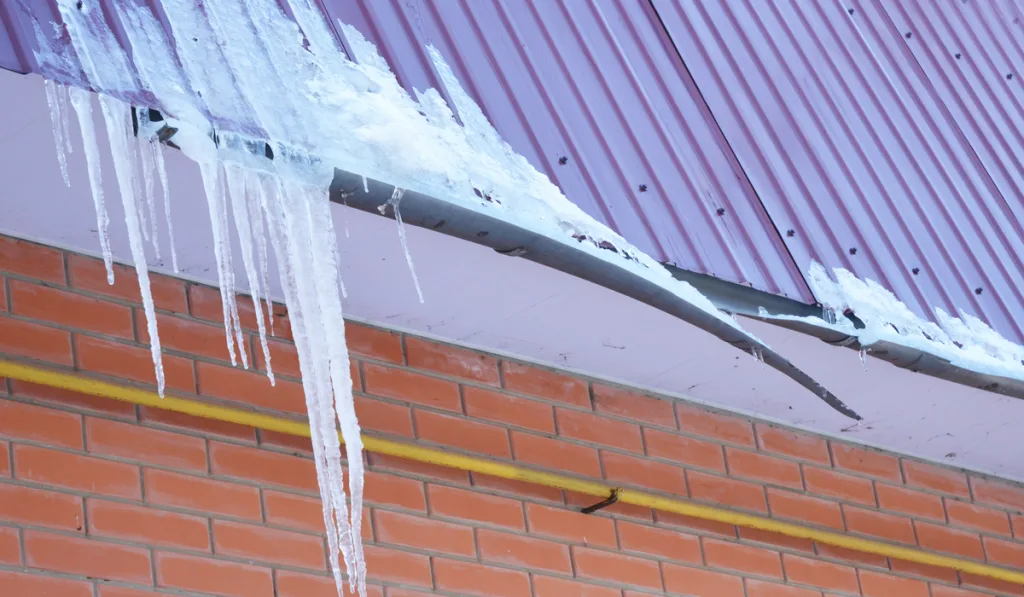
Why are Ice Dams Bad?
If not immediately managed, ice dams often hold hidden streams of water that could cause roof leaks. Ice dams can also loosen roof shingles and even tear off gutters.
The leaking from an ice dam often results in peeling wall paint, stained and saggy ceilings, and warped floors. Leaks also create a soggy atmosphere in the attic, which is nothing but a magnet for mildew and mold.
Ice dams also have a potential risk of sliding off and falling on a pet or person at the worst.
It’s also not a good idea to climb up the roof to remove an ice dam, for the associated risks are too high. Therefore, the task is best left to a professional.
How to Prevent Ice Dams
Use Heated Cables
As we know it, prevention is better than cure.
You can have heated cables installed on your roof. These heated cables attach to the roof with special clips, and the network of coils uniformly heat the roof from the outside, preventing ice dams.
Quick Fixes to Ice Dams
Never wait till it’s too late to consider countering ice dams. However, if you realize you have an ice dam problem, here are a few quick-fix methods.
DIY De-icing
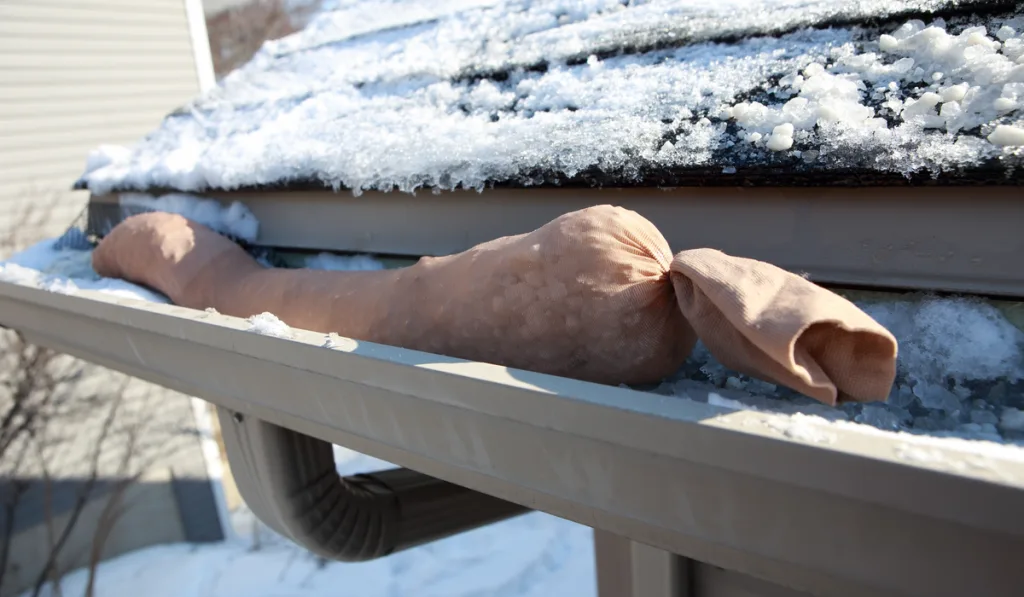
Fill a pantyhose with calcium chloride (road salt), a compound that helps melt ice.
Avoid using sodium chloride or rock salt, as these could be more detrimental to the roof shingles and gutters than they are helpful as an ice-melting agent.
Once you place the pantyhose on the ice dam, it will slowly melt through the ice, forming a channel for water to flow through and off the roof.
Raking
An extended roof rake with wheels designed explicitly for raking snow off the roof is always helpful whenever winter comes.
The long handle of a roof rake allows you to stand on the ground so you can safely remove the snow. Removing the snow will change the roof’s temperature without damaging the shingles.
Cold Air
Instead of exposing yourself and your family to the potential risk of falling when clearing ice off the roof, try using a box fan.
Take a box fan into the attic and aim the fan toward the leaks in the attic ceiling. The air current will cool the surface, and the water should freeze within minutes.
Hire a Professional
With the help of commercial steaming equipment, professionals have the know-how to safely remove ice on the roof with the least potential for risks and hazards. They can dislodge the ice from the roofs and gutters with pressurized hot water.
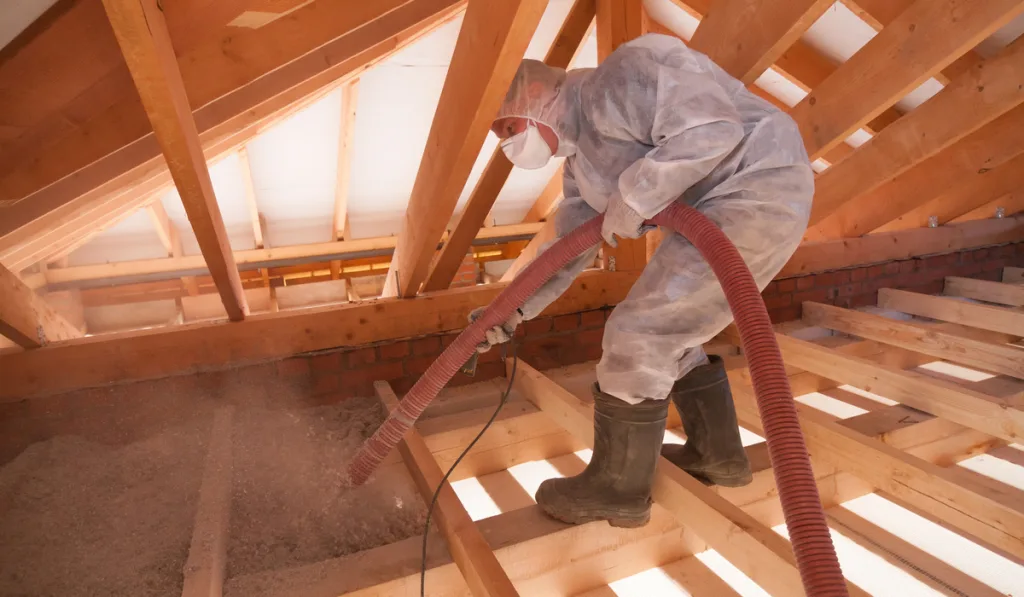
Permanent-Fix Solutions for Ice Dams
Keep the eaves and roof at the same temperature to permanently eliminate ice dams.
To do this, you need to do the following.
- Increase ventilation in the eaves and the roof ridge to increase air circulation around the room, helping maintain temperature.
- Add insulation to the attic floors to keep the house’s heat where it belongs.
- Seal off and insulate ducts to prevent any air leaks that could increase the temperature in the attic. Also, ensure that all the exhaust ducts, like chimneys and toilet vents, lead to the exterior.
- Cap attic hatches with weather-stripped covers made of foil-faced boards bonded by aluminum tape to seal off any potential openings for heat to escape.
- Install sealed can lights. You can seal can lights with insulation so they won’t give off heat.
- Install flashing around chimneys. Use a fire-proof sealant and flashing to insulate the gap between the framing and chimney.
Conclusion
Gutters are not responsible for ice dams but might be an accelerating factor in forming ice dams. Either way, having good roof maintenance practices should help rid the roof of ice and potential ice dams.
Resources
- https://goasher.com/gutters/how-ice-dams-form-and-ways-to-prevent-them/
- https://www.wi-icedamsolutions.com/do-gutters-cause-ice-dams.aspx
- https://home-partners.com/articles/ice-dams-quick-fixes-cure
- https://www.dryhome.com/are-your-gutters-creating-ice-dams/
- https://www.thisoldhouse.com/roofing/21017660/how-to-get-rid-of-ice-dams
- https://icedamremovalguys.com/learning-center/ice-dam-myth-busters/myth1-gutters-cause-ice-dams/
- https://www.brothersgutters.com/blog/gutters-cause-ice-dams/
- https://www.fickbros.com/how-to-prevent-ice-dams-and-iciles/
